Heritage Month
German American
It is estimated that 12 percent of Americans are of German descent, making German Americans the largest ancestral group in the nation. In 1983, in recognition of the tricentennial of Germantown, Pennsylvania, President Ronald Reagan proclaimed October 6th German American Day.
Read on to learn about notable German-born Americans. A curated display featuring these immigrants and other German American icons is on display through October at the American Family Immigration History Center.
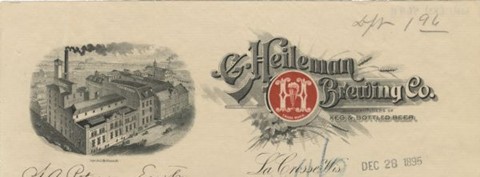
Born in Kirchheim unter Teck, Württemberg in 1824, Johann Gottlieb Heileman, known as Gottlieb Heileman (1824 –1867), belonged to a German brewer’s family. In 1852, Heileman immigrated to the United States and settled first in Philadelphia before moving to Milwaukee, Wisconsin, where he founded a bakery. Gottlieb moved to La Crosse, Wisconsin in 1858, where he co-founded the City Brewery with fellow German immigrant John Gund. Eventually, Gund sold his share to Heileman, and the brewery was renamed the G. Heileman Brewing Company.
Visual: Wisconsin Center for Film and Theater Research

In 1961, his brewery hosted the first Oktoberfest in the U.S. as part of a community-wide cultural festival in La Crosse. The following year, the name Oktoberfest, an annual beer festival that originated in Munich, Bavaria, was registered with the State of Wisconsin. Today, states across the nation celebrate this German and Bavarian festival.
On December 12, 1870, Gottlieb Heileman sailed to the U.S. aboard the S.S. Deutschland. He can be found in the Ellis Island Passenger Database under Passenger ID: 9012270917636 as an American citizen passing through the Port of New York.
Visual: Brooks, J. (2023, January 7). Historic beer birthday: Gottlieb Heileman
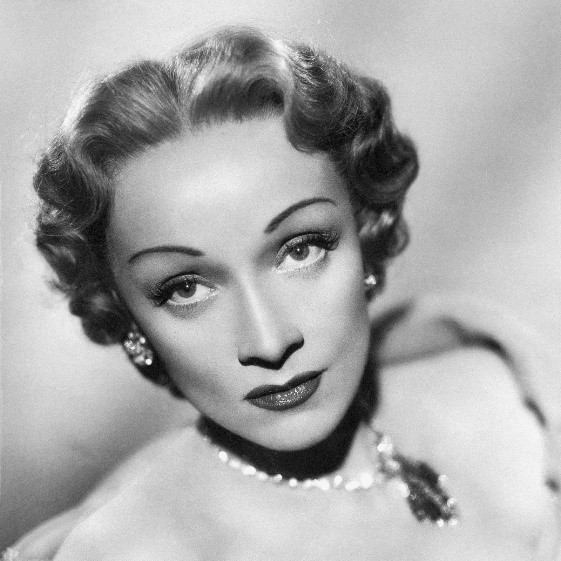
“America took me into her bosom when there was no longer a country worthy of the name, but in my heart, I am German – German in my soul” said Marlene Dietrich, a German singer and actress who re-invented herself to maintain a successful career in a foreign country from the 1920s to the 1980s.
Marie Magdalene von Losch or Marlene Magdalene Sieber, known as Marlene Dietrich, was born on December 27, 1901, in Leberstraße, a district of Berlin. In her teenage years, she studied violin but faked a wrist injury to seek acting and modeling jobs after being inspired by cabaret nightlife. Marlene’s career began in the 1920s with a small part in the film The Little Napoleon (1923) directed by Georg Jacoby. She made her big break in silent films, namely Café Elektric (1927).
By the end of the 1920s, Marlene attracted the attention of Rudolf Sieber, a casting director at Universum Film-Aktien Gesellschaft (UFA) film studios, who began casting her in small film roles. He later became her husband. Deitrich rose to international fame in 1930, starring in the Der Blaue Engel (The Blue Angel) film directed by Josef von Sternberg.
Visual: Marlene Dietrich Biography. A&E; Television Networks. April 2, 2014
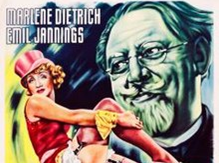
During the Holocaust and World War II, she appeared in The Scarlet Empress (1934), The Devil Is a Woman (1935), Desire (1936), Destry Rides Again (1939), and The Spoilers (1942).
Despite being offered lucrative contracts, Dietrich refused to work in Nazi Germany. Instead, she developed her legacy by raising money to assist Jews escaping Germany, helping the United States government sell war bonds, and boosting morale on the front lines by performing for allied troops.
In 1945, Dietrich received the Presidential Medal of Freedom, one the highest civilian awards in the U.S. for her work during the Holocaust, which she described as “the only important thing I’ve done.”
On April 9, 1930, Marlene Dietrich passed through the Port of New York under a contract with Paramount Pictures. She can be found in the Ellis Island Passenger Database under Passenger ID 9011991399435. She became a U.S. citizen in 1939.
Visual: Theatrical release poster of Der Blaue Engel (The Blue Angel) (1930)
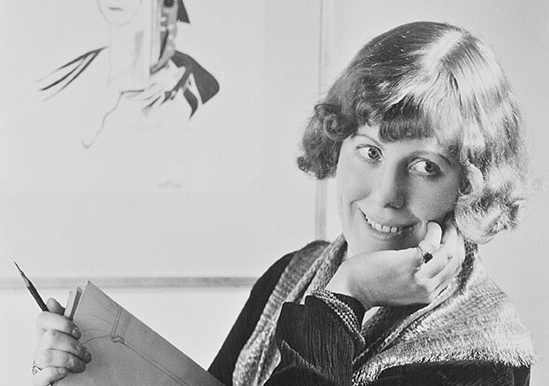
Painting, like music, has nothing to do with the reproduction of nature, nor interpretation of intellectual meanings. Whoever can feel the beauty of colors and forms has understood nonobjective painting. Hilla von Rebay (1890 – 1967)
Artist and museum director Hilla Rebay was born Hildegard Anna Augusta Elisabeth Freiin Rebay von Ehrenwiesen on May 31, 1899. Known as “Baroness Hilla Rebay von Ehrenwiesen” or simply Hilla Rebay, she belonged to a German aristocratic family in Strasbourg, Alsace-Lorraine, then part of the German Empire.
Rebay attended the prestigious private art school Académie Julian in Paris (1909-1910). There, she combined her passion for art and spirituality through her paintings. Her portraiture skills turned into abstract art that became her signature. In 1916, Rebay moved to Berlin and had an exhibition at Galerie Der Sturm, where she showed a series of sketches Composition I (1915), which are now in Solomon R. Guggenheim Museum collection.
Visual: Hilla Rebay, photographed by Eugene Hutchinson in her Carnegie Hall studio in 1935. Photo: Eugene Hutchinson, Courtesy of HVRF Archives
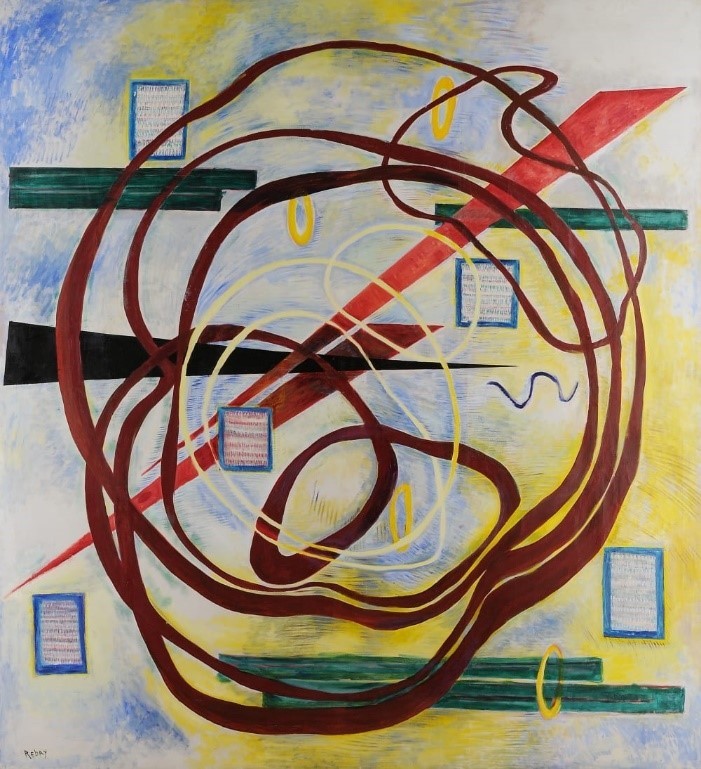
On January 4, 1927, Hilla Rebay immigrated to the United States with the goal of establishing a gallery for non-object art with Rudolf Bauer’s work. She became a close friend of Solomon R. Guggenheim, encouraging him to invest in abstract art. When founding the Museum of Non-objective Painting (now known as the Guggenheim), Guggenheim utilized many of Rebay’s artworks and tapped her to become museum director. She served in this role until 1952. In 2005, the Guggenheim Museum again showed Rebay’s first exhibition, Art of Tomorrow, which originally opened in June 1939.
Hilla was denied U.S. citizenship in 1938 and in 1942 was named an enemy alien and taken into U.S. custody. Cleared of all charges, Rebay was awarded citizenship in 1947. Rebay passed away on November 1, 2008, leaving behind an unforgettable legacy.
Rebay von Ehrenwiesen can be found in the Ellis Island Passenger Database under Passenger ID 901703840647.
Visual: Forte, C. 1949-59